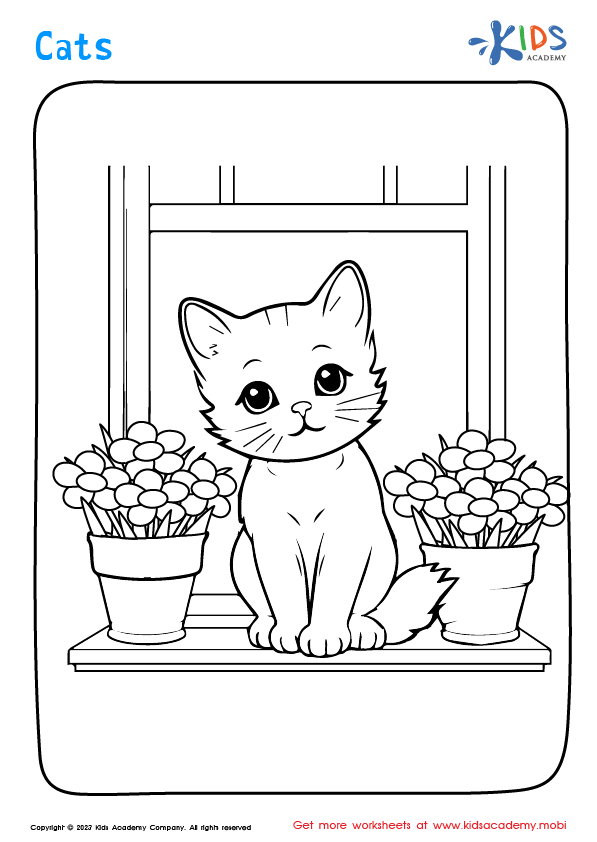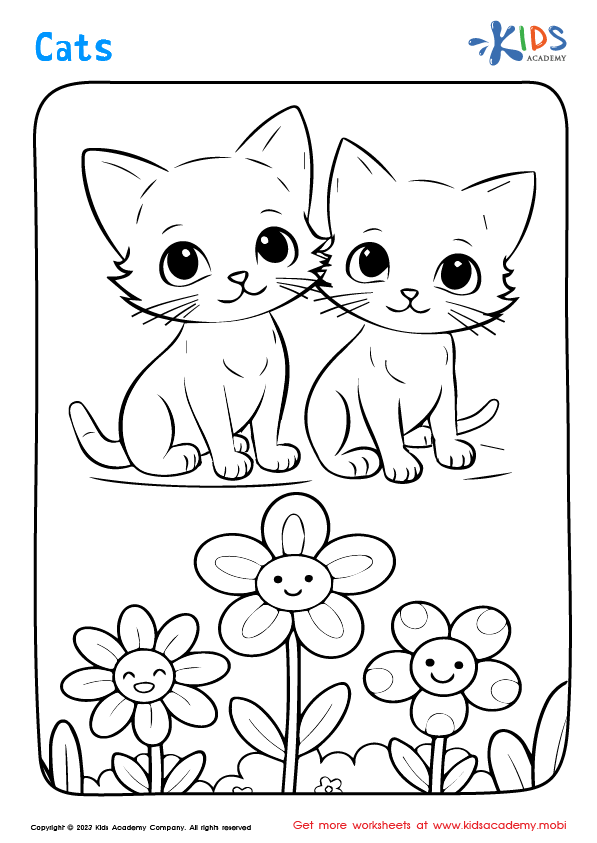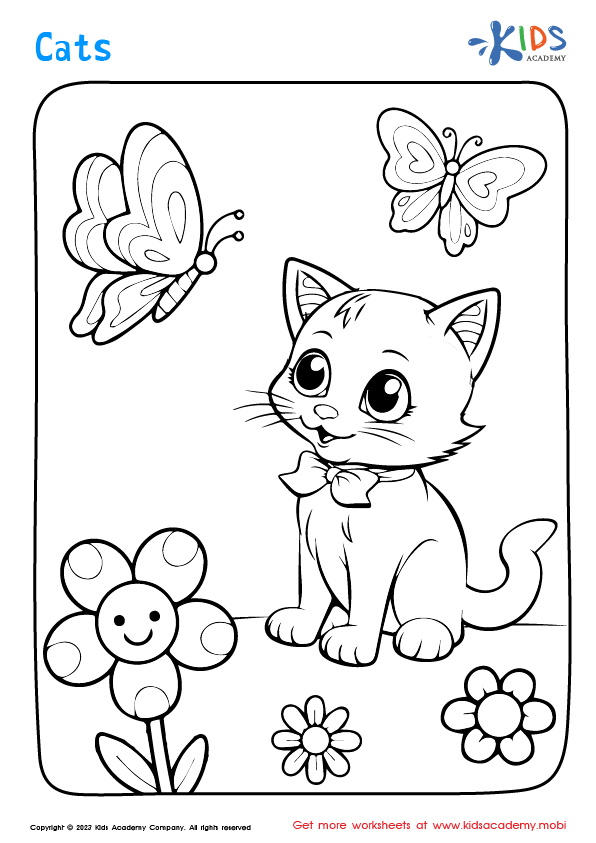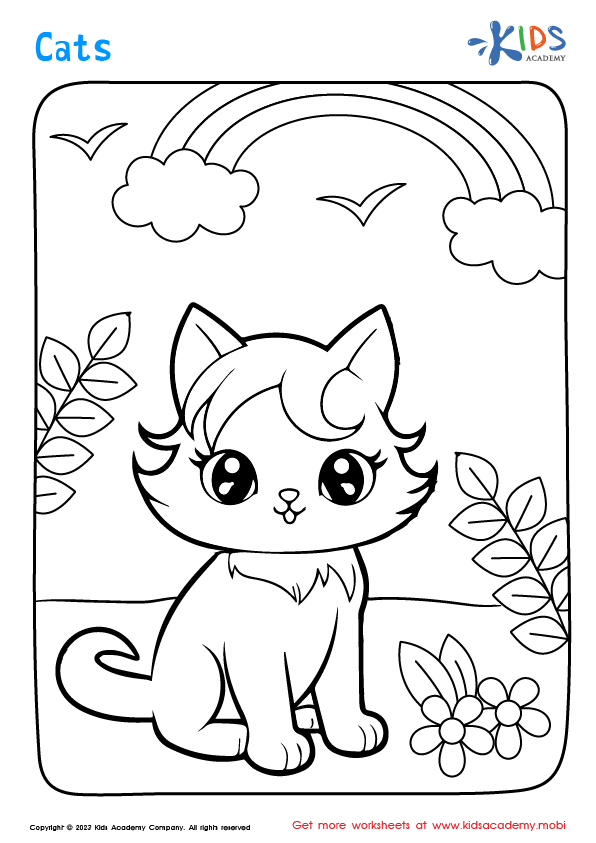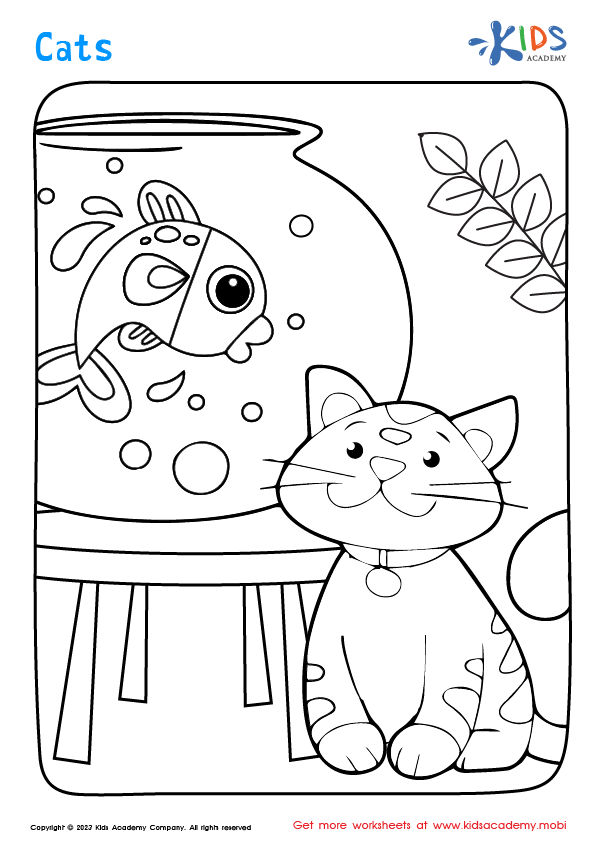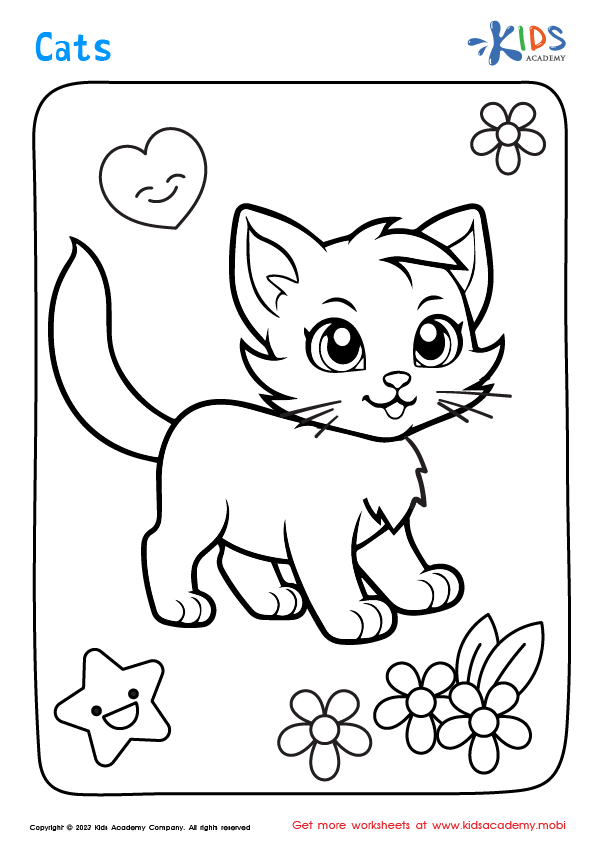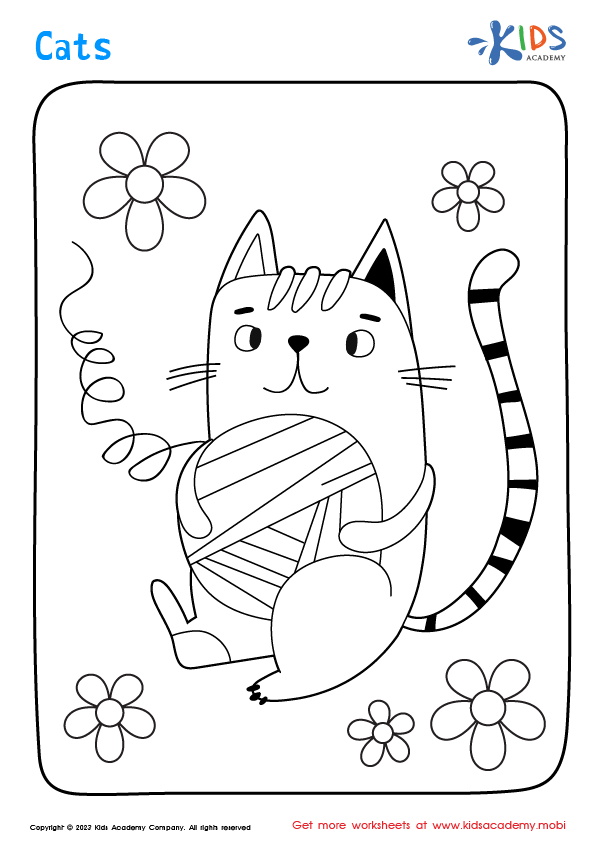Cats Worksheets for Ages 3-7
8 filtered results
-
From - To
Unleash your child's creativity and learning with our "Cats Worksheets for Ages 3-7." Designed to delight young cat lovers, our printable coloring pages feature adorable feline illustrations that engage and educate. Perfect for enhancing fine motor skills, color recognition, and creativity, these worksheets provide a fun, interactive way to learn about colors and cats. Ideal for home or classroom use, our easy-to-print worksheets ensure learning is always enjoyable. Give your little ones the purr-fect introduction to art and education with these charming worksheets from Kids Academy!
Cats offer a unique opportunity for learning and emotional development for children ages 3-7. At this stage, children are like sponges, eager to explore and understand the world around them, and interacting with cats can richly contribute to their growth.
First, cats teach empathy and caregiving. When children help feed or groom a cat, they see firsthand the importance of meeting the needs of another living being. This instills a sense of responsibility and compassion that extends beyond their relationship with the pet.
Second, cats can be integral in teaching children about boundaries and reading non-verbal cues. Cats communicate largely through body language, and children must learn to recognize these signals. This understanding fosters better social interaction with peers.
Moreover, having a cat can provide emotional comfort. The rhythmic act of petting a cat can be soothing, reducing stress and anxiety. This emotional safety net helps children navigate their feelings and develop emotional resilience.
Lastly, incorporating cat-related themes through stories, play, and activities can be entertaining and educational. It seamlessly integrates lessons into their daily life, making learning fun.
All these aspects make cats wonderful companions, enriching the early developmental years of children.
